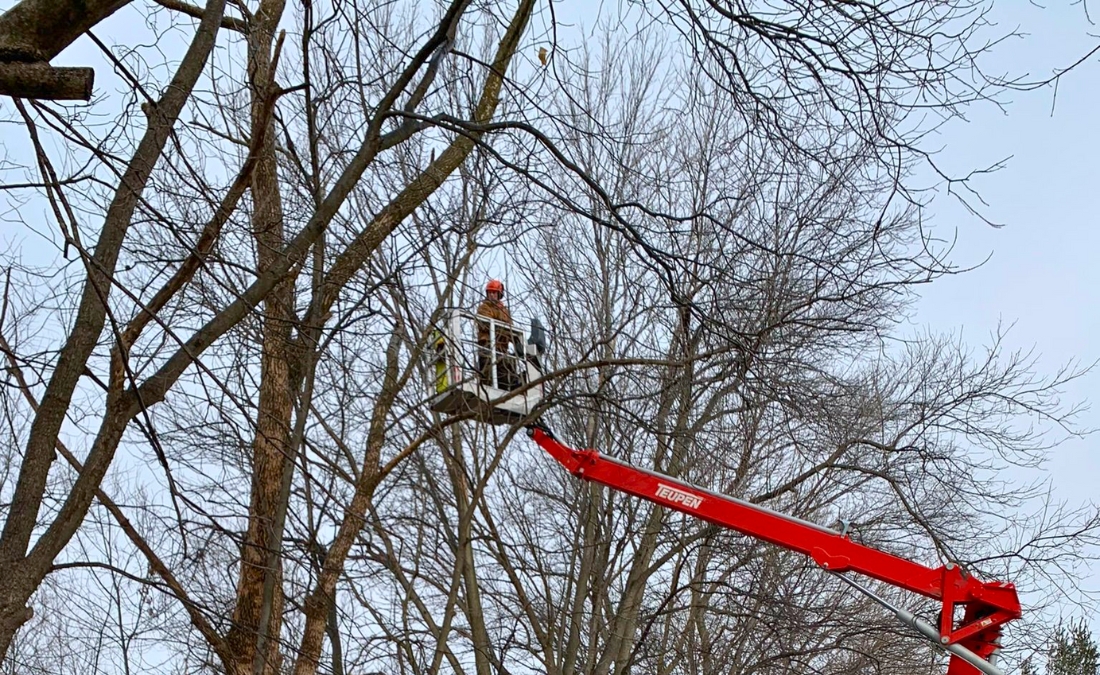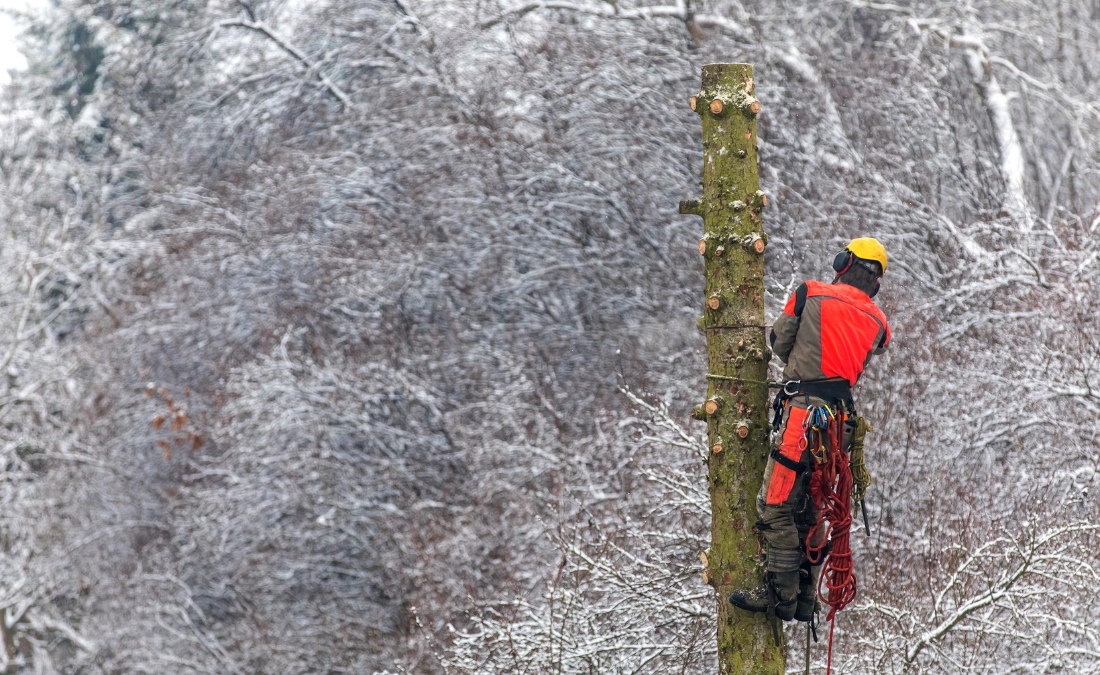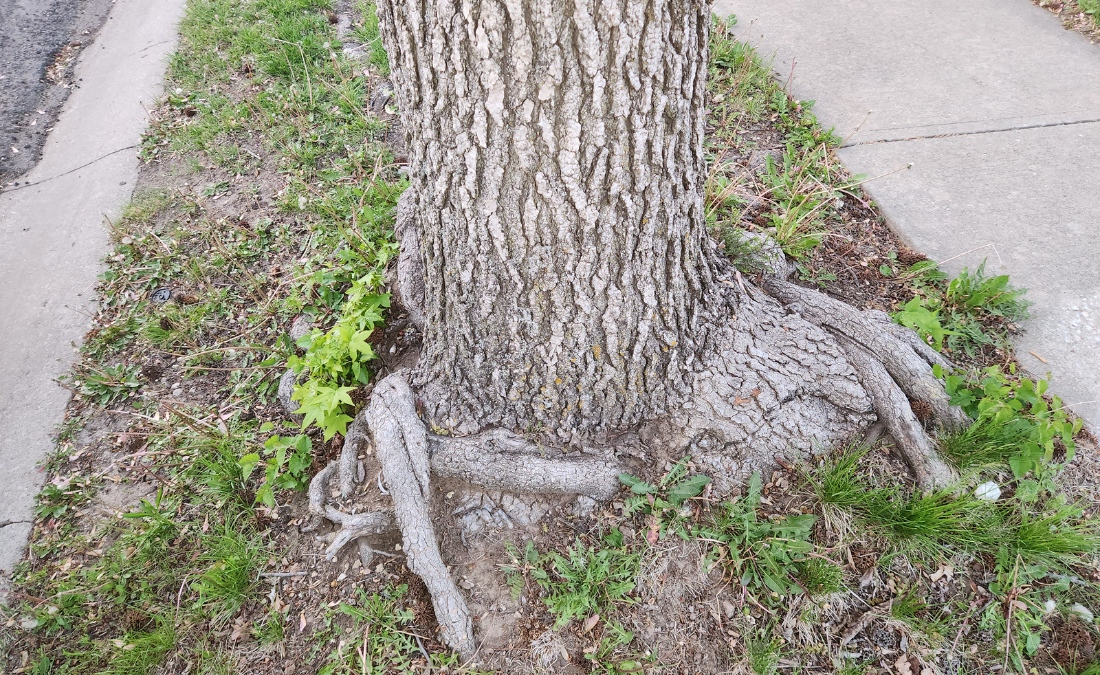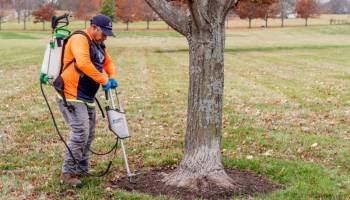The 5 Most Destructive Tree Pests Affecting Des Moines in 2025
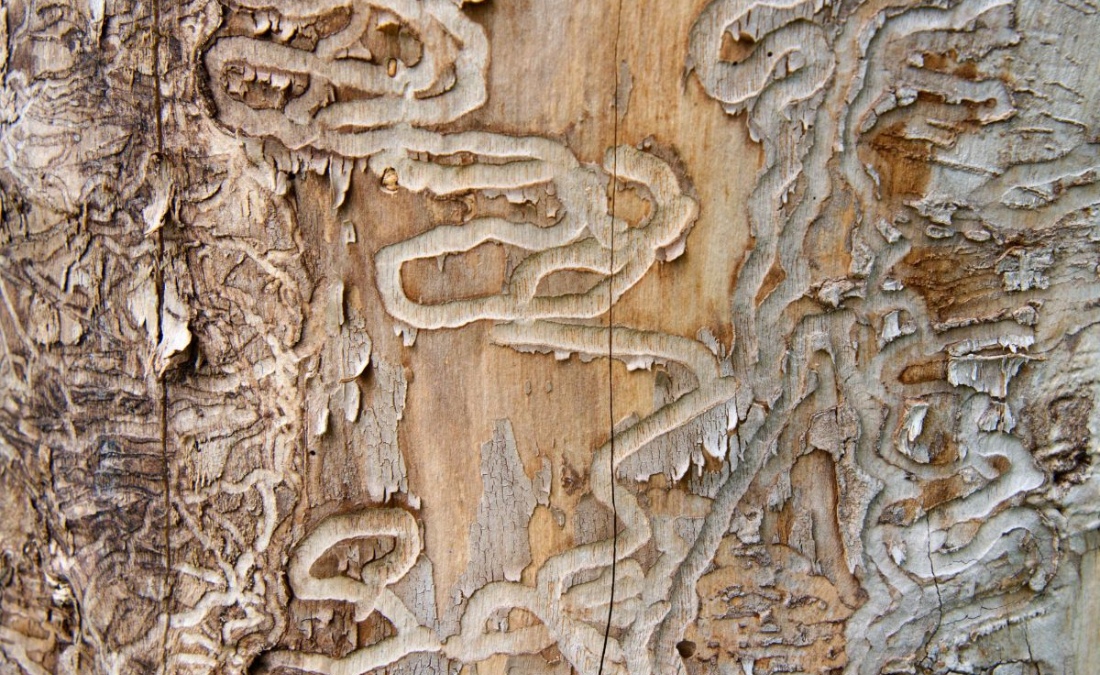
Don’t let destructive tree pests in Des Moines destroy your landscape. Learn when to act, what to watch for, and how to keep your trees strong and healthy.
August in Des Moines means backyard barbeques, long summer evenings… and prime feeding time for some of the city’s most destructive tree pests. Japanese beetles skeletonize linden leaves, emerald ash borers bore deeper into ash bark, and squirrels strip bark from young maples and oaks, turning healthy trees into easy targets for disease and decline.
These pests can kill mature trees worth thousands of dollars, create safety hazards that threaten your family and property, and destroy the curb appeal that took decades to establish. Fortunately, with the right care and knowledge of the warning signs, you can preserve your trees’ health and protect against future pest issues.
Key Takeaways
- Early detection saves trees and money when catching pest problems in Ankeny, West Des Moines, and surrounding areas before they spread and require costly tree removal.
- Treatment timing is critical because most effective pest treatments have narrow application windows that require professional knowledge to hit correctly.
- DIY attempts often backfire when homeowners frequently misidentify pests or apply treatments at wrong times, allowing problems to worsen.
- Local expertise matters since ISA-Certified Arborists understand Des Moines area pest cycles and environmental factors affecting treatment success.
- Prevention beats treatment by maintaining tree health through proper care to reduce vulnerability to pest infestations.
- Professional assessment is critical because expert evaluation can distinguish between similar looking problems and recommend the most effective approach.
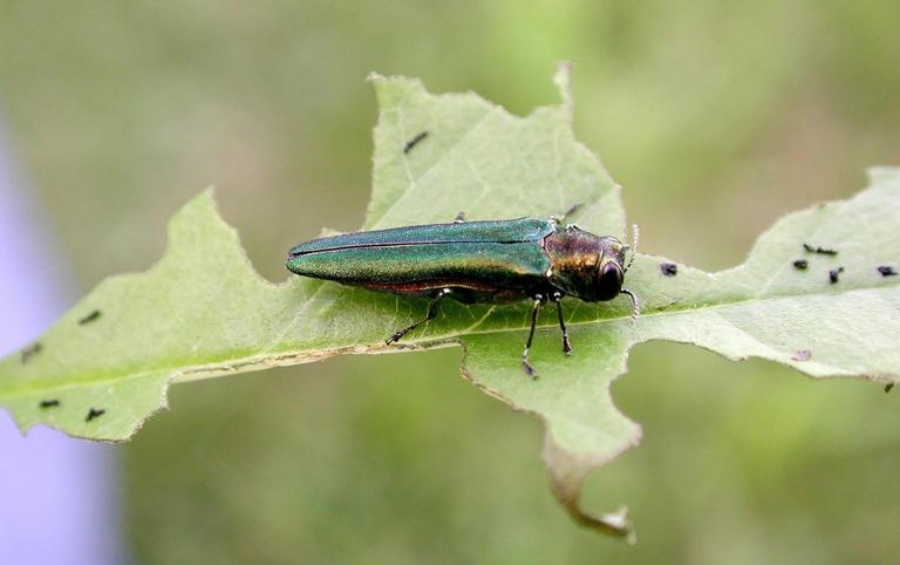
An adult emerald ash borer, feeding on a leaf. Debbie Miller, USDA Forest Service, Bugwood.org
1. The Emerald Ash Borer (Agrilus planipennis)
No pest has been more devastating to Iowa’s urban forest than the emerald ash borer (EAB). Now confirmed in 84 of Iowa’s 99 counties, this invasive beetle has fundamentally changed the landscape of Des Moines area neighborhoods – and at a rapid pace.
How to Identify Emerald Ash Borer Damage
EAB attacks all ash species native to Iowa, including white, green, and blue ash trees. The adult beetles lay eggs in bark crevices, and the larvae bore into and feed on the live tree tissue under the bark, disrupting the tree’s ability to transport water and nutrients. Trees typically die within two to four years of initial infestation.
Warning signs include:
- Canopy thinning starting at the top of the tree
- D-shaped exit holes about 1/8 inch wide in the bark
- Increased woodpecker activity and damage
- Sprouts growing from the trunk or main branches
- Serpentine galleries (the network of tunnels created by boring insects) visible under loose bark
“The key to EAB management is starting treatments before you see symptoms,” says Chase Andersen, ISA Board Certified Master Arborist at Arbor Masters Des Moines. “Once trees show decline, we’re often looking at removal rather than treatment. But healthy ash trees can be protected with properly timed systemic insecticides.”
And while there’s no recovery treatment once EAB damage symptoms become noticeable, proactive management can protect unaffected ash trees and prevent the need for tree removal.
Treatment involves trunk injections of emamectin benzoate, a professional insecticide, typically applied every two to three years. However, timing and dosage are critical; mistakes can waste money or harm the tree, making professional intervention critical.
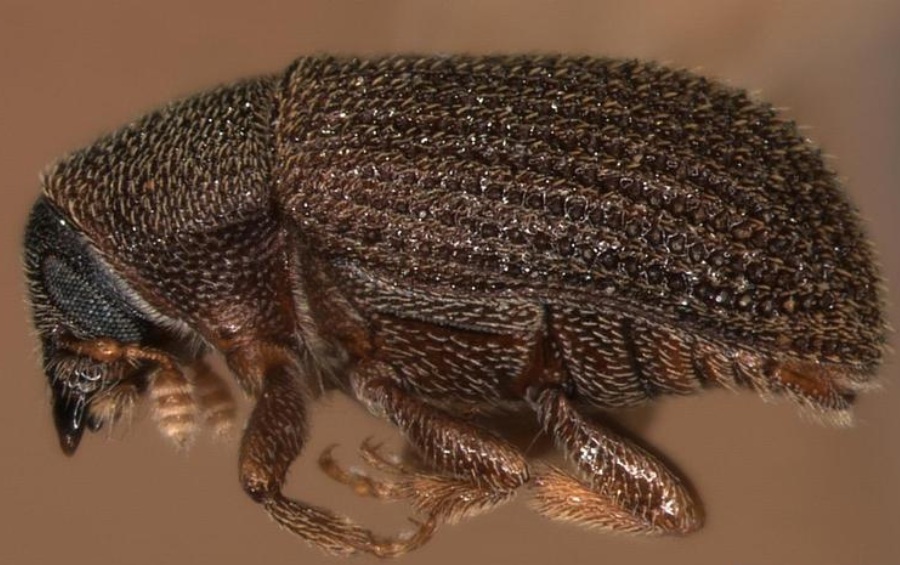
A close-up image of a bark beetle. Photo by Javier E. Mercado, Bark Beetle Genera of the U.S., USDA APHIS PPQ, Bugwood.org
2. Elm Bark Beetles That Are Responsible for Dutch Elm Disease (DED)
While EAB gets most of the attention, elm bark beetles (Hylurgopinus rufipes) continue to spread Dutch elm disease (DED) throughout Des Moines area neighborhoods, devastating the urban elm population over the last several decades.
How Do Bark Beetles Spread Dutch Elm Disease?
A fungal disease that blocks a tree’s capillary system and disrupts water intake, DED is spread in two distinct ways:
- Elm Bark Beetles: First seen in North America in the early 1900s, the European elm bark beetle carries the deadly Ophiostoma fungus from infected to healthy elm trees when feeding on the twigs and branches or burrowing under the bark to lay eggs.
- Root Grafts Between Nearby Trees: Elm trees that grow in close proximity often develop root grafts, where neighboring roots connect and share nutrients. If one tree gets infected, the fungus will move through the conjoined root systems and infect adjacent trees, even if no beetles have made contact with any other elm.
To determine if DED is plaguing your Des Moines trees, look for “flagging:” individual branches with yellowing leaves that turn brown but remain attached to the tree. This typically starts in the upper canopy during summer months. Unlike gradual seasonal change, DED causes rapid wilting and browning of entire branches.
And while the direct beetle damage is significant enough, trees infected through root grafts often die quicker than those that had first-hand beetle contact, sometimes within a single growing season, due to the systemic nature of the infection. Properties in established neighborhoods like Highland Park and Beaverdale, where mature elms grow close together, face higher risk due to potential root connections.
Some ways to prevent DED include:
- Removing dead elm wood before beetles emerge in spring
- Avoiding pruning during active beetle periods (April through July)
- Proper watering and general care to maintain optimal tree health
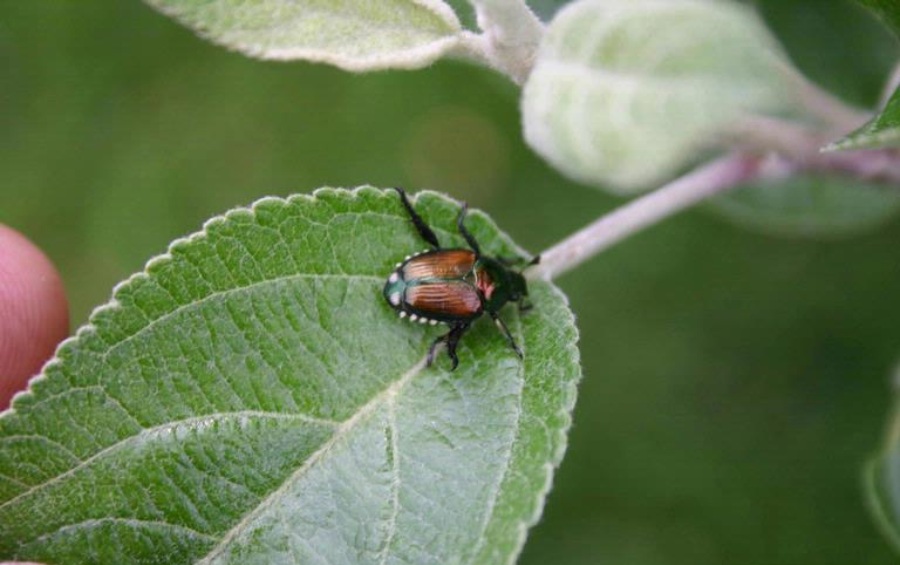
A close-up of an adult Japanese beetle on a leaf. Photo by William Fountain, University of Kentucky, Bugwood.org
3. Japanese Beetle (Popillia japonica)
These metallic green and copper beetles attack more than 300 plant species, making them one of
the most destructive landscape pests affecting Des Moines area trees. Adult beetles emerge in mid to late June and remain active through August, with peak damage occurring in July. They feed in groups, skeletonizing leaves by eating tissue between major veins.
Where to Look for Japanese Beetles
Trees commonly attacked in Urbandale, Clive, and surrounding areas include:
- Linden trees
- Crabapple and apple trees
- Cherry trees
- Birch trees
- Elm trees
While mature, healthy trees can survive defoliation, the stress makes them more vulnerable to other problems. Newly planted trees and those already stressed by drought or disease may suffer permanent damage or death from severe beetle feeding.
Control options are limited, and timing is crucial. Foliar sprays must be applied when beetles first appear and reapplied as new beetles emerge. Soil treatments that target grubs work best when applied in late July through September.
Though these invasive beetles didn’t appear in Iowa until 1994, they’re now found in over three-fourths of the state making them a major concern, especially considering their larvae (white grubs) feed on grass roots and destroy lawns.
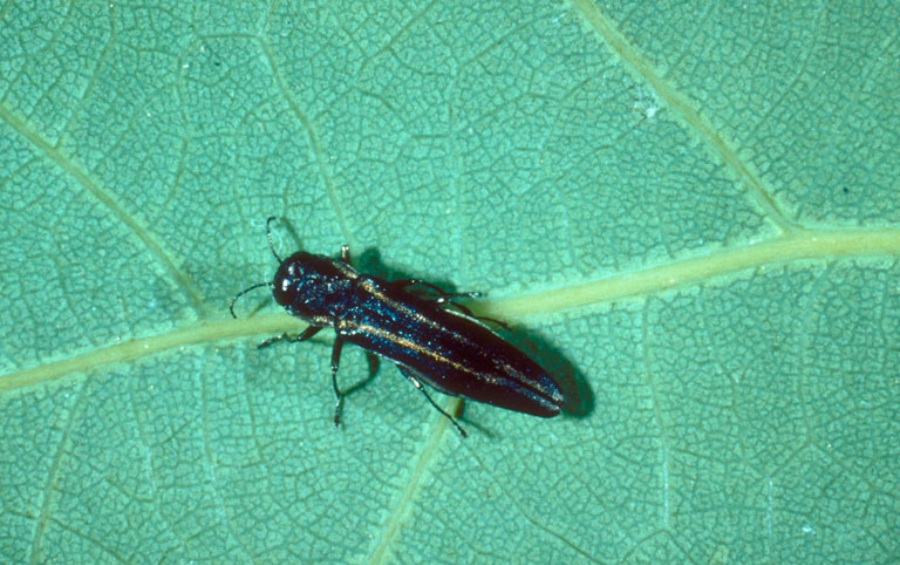
A close-up photo of a two-lined chestnut borer by Robert A. Haack, USDA Forest Service, Bugwood.org
4. Two-Lined Chestnut Borer (Agrilus bilineatus)
The two-lined chestnut borer poses a serious threat to oak trees throughout central Iowa, particularly during periods of drought stress. This native beetle attacks weakened oak trees, including the bur oaks, red oaks, and white oaks common in Des Moines area landscapes.
Signs of Two-Lined Chestnut Borer Damage
The most recognizable symptom is branch dieback starting from the tip. If you notice branches on your oak tree with brown, dead tips, the two-lined chestnut borer may be the culprit. These beetles typically begin attacking in the upper canopy and work downward over time.
Other key symptoms include:
- Leaves that wilt suddenly and turn uniformly brown
- Brown leaves that remain attached to branches
- D-shaped exit holes about 1/8 inch wide on affected branches
- Damage progressing from upper to lower canopy over time
Similar to DED damage, this flagging differs from normal autumn color change because it affects entire branches and occurs during the growing season. Trees in urban environments face multiple stressors that make them vulnerable: soil compaction, construction damage, road salt, and drought.
To prevent damage from these destructive tree pests in Des Moines, focus on maintaining tree health by:
- Providing proper amount of water during dry periods
- Avoiding soil compaction around root zones (eliminate foot traffic, avoid construction work near the tree base, etc.)
- Applying mulch to retain optimal soil moisture and reduce competition from grass and weeds
If and when symptoms do appear, infected branches should be pruned and destroyed before beetles emerge in late May.
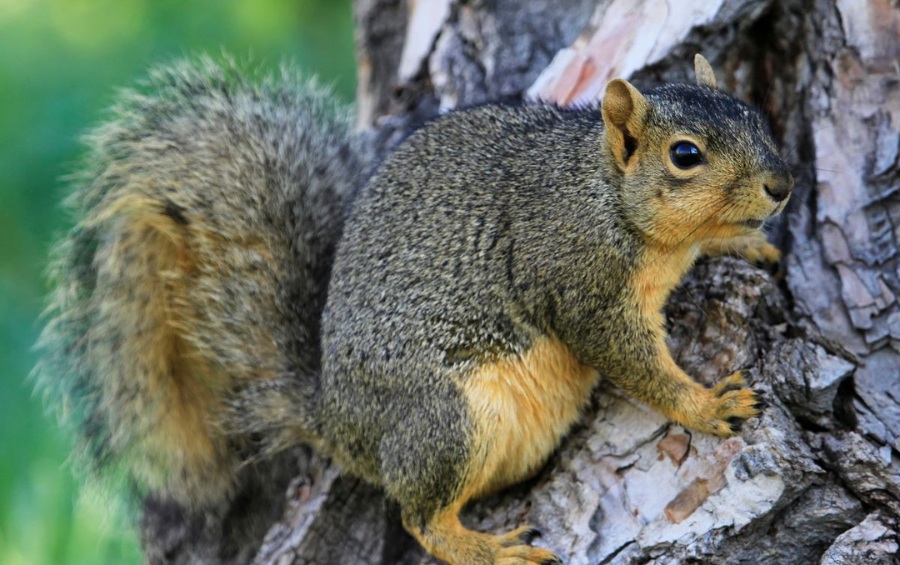
5. Squirrels
Typically not considered a pest, fox squirrel populations have grown significantly in urban areas, establishing them as another destructive tree pest in Des Moines. Often seeking moisture during dry periods, squirrels will gnaw bark to access the nutrient-rich cambium layer beneath.
Bark gnawing appears as stripped sections on branches and trunks, particularly on younger trees and the outer growth of mature trees. If squirrels remove bark completely around a branch (girdling), that branch will die. Small trees can be killed if the main trunk is girdled.
Trees commonly targeted include:
- Red oak trees
- Newly planted trees of various species
- Pecan trees
- Young maple trees
The damage often occurs during late winter and early spring when other food sources are scarce, but can happen year round in areas with high squirrel populations.
Chemical repellents containing thiram can reduce damage severity, but physical barriers, like tree wraps or metal guards, provide better protection. Providing alternative food sources and water can redirect squirrel activity away from valuable trees.
Don’t Be the Pest in Your Own Yard
When it comes to destructive tree pest control, the wrong approach can often do more harm than the infestation you’re trying to stop. Well-intentioned DIY treatments often damage trees, disrupt the balance of
beneficial insects, and give pests an even bigger advantage. Here are some of the most common ways homeowners accidentally make the problem worse:
Pest Misidentification
Mixing up oak wilt with two-lined chestnut borer, or confusing early emerald ash borer symptoms with other ash issues, can set your trees back months. Wrong diagnosis means wrong treatment – and every delay gives the real pest more time to spread.
Poor Treatment Timing
In pest control, timing is everything. Spraying Japanese beetles too early or too late misses the pest entirely. Treating emerald ash borer after symptoms appear wastes money and offers false hope. Pruning squirrel-damaged branches in late winter or early spring – when squirrels are most active and other stress factors are high – can slow recovery and increase the risk of dieback. In each case, bad timing doesn’t just fail to solve the problem, it can hand pests an even bigger advantage.
Chemical Overuse and Safety Issues
More pesticide doesn’t mean more protection. Overapplication can stress trees, kill beneficial insects, and weaken natural defenses, making your yard even more appealing to pests. Without the right training, safety precautions, and equipment, you also risk injury, uneven coverage, or chemical interactions that create new problems.
The biggest mistake? Treating symptoms instead of solving the underlying cause. Certified Arborists address the root problem with a targeted, long-term plan that protects your landscape and stops minor pest issues from becoming major losses.
Frequently Asked Questions About the Most Destructive Tree Pests in Des Moines
When is the best time to preventatively treat for emerald ash borer in Des Moines?
EAB treatments should be applied in late spring (ideally sometime in May) when trees are actively taking up water and nutrients. Treatment must begin before symptoms appear for maximum effectiveness. Trees showing decline may be too damaged to save, so it’s always important to first check with a professional.
How can I tell if my oak tree has two-lined chestnut borer versus oak wilt?
Two-lined chestnut borer causes branch dieback starting at the tips, with dead leaves remaining attached for weeks or months. Oak wilt typically affects entire sections of the tree, with leaves turning brown and dropping more quickly. D-shaped exit holes are also an indicator of borer activity.
Are Japanese beetles worth treating on mature trees?
For healthy, mature trees, treatment may not be necessary as they can typically recover from defoliation. However, newly planted trees, stressed trees, or high-value specimen trees benefit from treatment during peak beetle activity in July.
What’s the difference between elm bark beetles and emerald ash borer?
Elm bark beetles are reddish-brown, about 1/8 inch long, attack elm trees, and are responsible for spread Dutch elm disease fungus. Emerald ash borer attacks only ash trees, is metallic green, and causes D-shaped exit holes. Both create similar-looking damage but require different treatments.
How do I protect young trees from squirrel damage?
Physical barriers like tree wrap or metal guards work best. Install guards in fall before peak gnawing season and remove during growing season to prevent girdling as the tree expands. Providing alternative water sources and food can also help redirect squirrel activity.
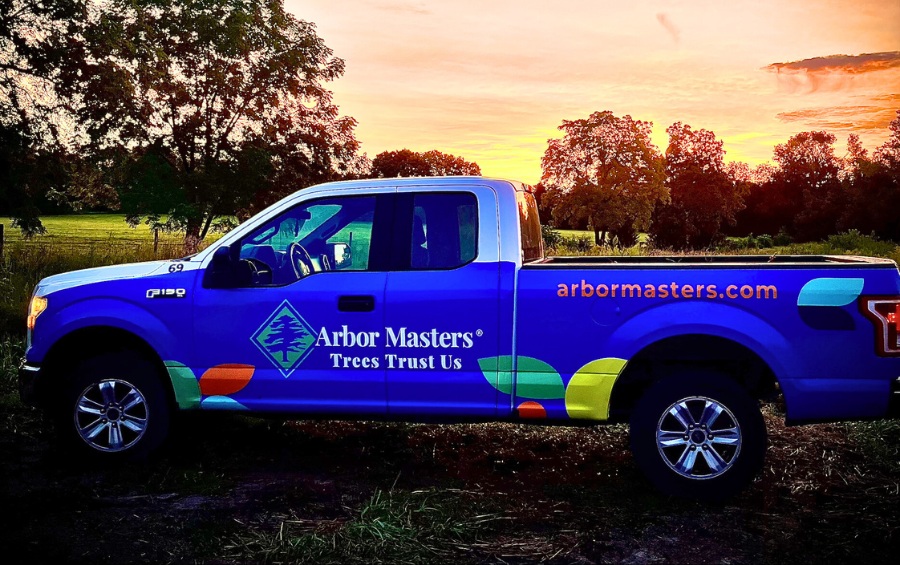
Treat Des Moines’ Most Destructive Tree Pests with Help from Arbor Masters
Protecting your valuable trees from these destructive pests requires expertise, proper timing, and often specialized equipment. At Arbor Masters, our ISA Certified Arborists understand the unique challenges facing trees in West Des Moines, Ankeny, Clive, Johnston, and surrounding communities.
Don’t wait until you see damage. Early detection and professional treatment can save your trees and protect your property investment. Contact us at 515-218-2025 or request an estimate online to schedule your tree health consultation today.
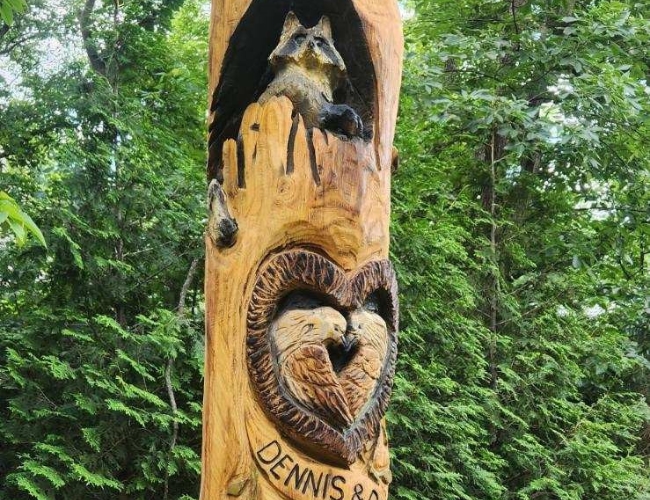
Get the latest local news, tree care tips, special offers, and company updates directly to your inbox! It's easy to subscribe and there's no spam - we promise.
"*" indicates required fields

